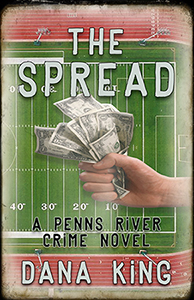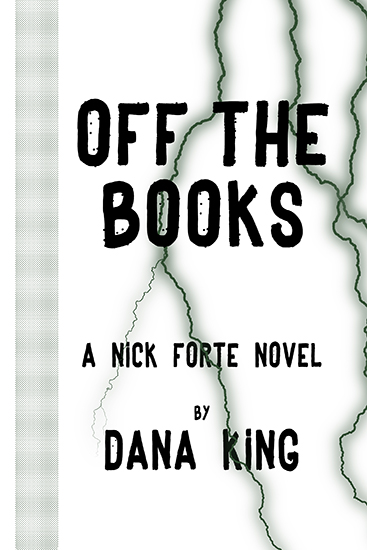Elgin Bleecker is one of the
unexpected side benefits of maintaining a blog. We met through his comments
here at OBAAT, struck up a correspondence, and then a friendship both
professional and personal. Elgin is a former journalist. Lyme
Depot, which dropped at the end of January, is his first novel.
One
Bite at a Time: Elgin, it’s a pleasure to have you
as a guest on OBAAT. Tell us a little about your new book, Lyme Depot.
 Elgin
Bleecker: Thanks for inviting me, Dana. Lyme Depot
is a crime story, a country noir about two young men, brothers. One is in the
county lockup, but doesn’t plan to stay there long. The other, the younger one,
out of loyalty, is trying to help his brother, but is unaware of the escape
plans or of new criminal charges about to come down on the older. It is two
parallel stories and both are chases – the older brother is being chased by
sheriff’s deputies, the younger is chasing the truth about the older. I called
it a country noir, but some of it could be called country noir lite, because
there is a bit of dark humor mixed in with the action. But there is nothing
funny about some of the violent scenes, which, I hope, will shake readers.
Elgin
Bleecker: Thanks for inviting me, Dana. Lyme Depot
is a crime story, a country noir about two young men, brothers. One is in the
county lockup, but doesn’t plan to stay there long. The other, the younger one,
out of loyalty, is trying to help his brother, but is unaware of the escape
plans or of new criminal charges about to come down on the older. It is two
parallel stories and both are chases – the older brother is being chased by
sheriff’s deputies, the younger is chasing the truth about the older. I called
it a country noir, but some of it could be called country noir lite, because
there is a bit of dark humor mixed in with the action. But there is nothing
funny about some of the violent scenes, which, I hope, will shake readers.
OBAAT: You and I have chatted in the past about where I got the
idea for Penns River. What’s your connection to Drum County?
EB: Drum County is a fictional combination of several places I
know. So many counties in middle America seem so peaceful and picturesque. But beyond
the surface appearance, there is always crime. The crimes range from comical
stuff, like someone risking arrest and jail for breaking into a garage and
stealing an old power lawn mower, to serious stuff like fights that end in
stabbings or shootings, domestic violence, and drugs. Drugs are and have been a
problem. But I purposely set Lyme Depot
in a time before the current opioid crisis.
OBAAT: Lyme Depot requires you to balance multiple story
lines and points of view. How do you do this? Outline? Seat of the pants with
revisions as needed? Something in between?
EB: Getting the two parallel stories of the brothers to work
together took a lot of planning. Once I had the basic idea, knew what each of
them would be doing, and how the story would wrap up, I made a point of
carefully plotting where they were, who they would meet along the way, and how
long it would take them to get from point to point. I even sketched a map of
Drum County so I could keep track of everyone’s movements – the brothers, the
sheriff and his deputies, and other characters they come in contact with. That
sounds a little mechanical, but there was plenty of room for invention as I
went along. In fact, I would like to do stories about a couple of the
characters who suddenly “arrived” in the novel to my surprise as I was writing.
OBAAT: I hate to ask authors to answer the “If you like
_____________, you’ll like me,” but clearly we all have authors who influence
us and to whom we’d be flattered when comparisons are made. Who is it for you?
EB: Whoa, Dana, I would hate to compare
myself to any of the authors I admire. So, I’ll take a cue from the politicians
on the Sunday morning news shows, and give you an answer that ducks the
question but connects to the idea of influence.
I have been a fan of comic novels for a long, long time, from
John Kennedy Toole’s gold standard, A
Confederacy of Dunces, to Roddy Doyle’s Barrytown trilogy – The Commitments, The Snapper, and The Van.
I love the comic crime novels of Carl Hiaasen. So, I suppose I had those and
more in the back of my mind when it came to Lyme Depot. An eye-opener for me were the Harlem crime novels of Chester Himes with their realistic
setting and their exaggerated characters and absurd, over the top action and
violence.
But I was also thinking about Daniel Woodrell and his country
noir tales. I am partial to the classic noirs, particularly the post-World War
II novels. I may have been thinking about some of Lionel White’s precisely
planned heist stories.
OBAAT: What did you do before you took up writing fiction and how
did it prepare you to write what you do?
EB: I was a journalist for many years. I’ve also worked in
advertising and marketing. But it was my time as a newspaper reporter that
contributed most to writing Lyme Depot. Journalism is a great job. The
pay is crap. But the experience is worth a million. I was lucky. I got to cover
sheriffs’ departments, big city police, small town cops, local politicians,
various courts – now that is where you really see a lot. Even if you aren’t there
for a specific case, just sitting in on arraignments you will see a variety of
people, their lawyers and often their families. In one way or another, that
experience found its way into Lyme Depot.
OBAAT: The list of journalists who have done well as authors of
crime fiction is lengthy the noteworthy, including such names as Michael
Connelly, Laura Lippman, Brad Parks, and Bruce DeSilva. Aside from the whole
“making things up” business, what was the hardest part of the transition for
you?
EB: Almost everything about the transition was different and
took some getting used to. But the toughest transition may have been making the
character’s motivations clear and understandable. I tried not to jump into
their minds to explain. I wanted it to come through action and dialogue. And
that was a challenge to do realistically.


3 comments:
Sounds great. Congratulations!!
Thanks, Dana. And thanks, Patti.
Way to go! Your book is right down my alley I have it on my list!
Post a Comment